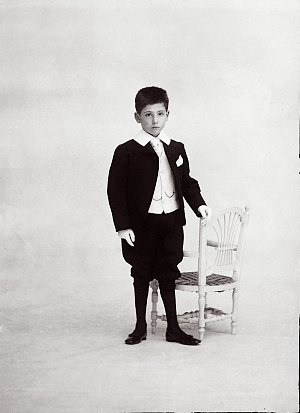
Nissim de Camondo, 1903
© MAD, Paris
Nissim joined the regiment of hussars that was garrisoned in Senlis from October 1911, when he left the Lycée Janson, before being called up to do his military service. Discharged with the grade of sergeant in November 1913, he began to train as a banker in the securities department at the Banque de Paris et des Pays-Bas. He was a dynamic, athletic and enthusiastic young man, and an excellent horseman and hunter.
A committed patriot, he enlisted in the army as soon as mobilization was declared on August 3, 1914. He kept up an almost daily correspondence with his father and sister, and a war diary filled with interesting accounts and detailed, evocative descriptions; the sincerity of his writing conveys his fervent patriotism, but also his affection for his family. He thus provided a day-by-day record of his wartime experiences: offensives and retreats, the Battle of the Marne, the war of the trenches. Promoted to the rank of sub-lieutenant, he was assigned to the 21st regiment of Dragoons in 1915; the same year, an encounter with pilots revealed more exciting possibilities than the hell of the trenches. He therefore asked to be transferred to the air force as an observer, and was assigned to squadron MF33 in January 1916. During the battles of Verdun and the Somme, he carried out numerous photographc missions and had many narrow escapes, earning several citations from the French Army. He was promoted to the rank of lieutenant in July 1916, and gained his pilot’s licence. During a reconnaissance mission on September 5, 1917, his plane was shot down during aerial combat near Emberménil in Lorraine.
The enemy buried him at Avricourt. Moïse de Camondo did not receive confirmation of his son’s death until early October. Nissim’s body was placed in the family vault in the cemetery of Montmartre in January 1919. With his death, the family became extinct.